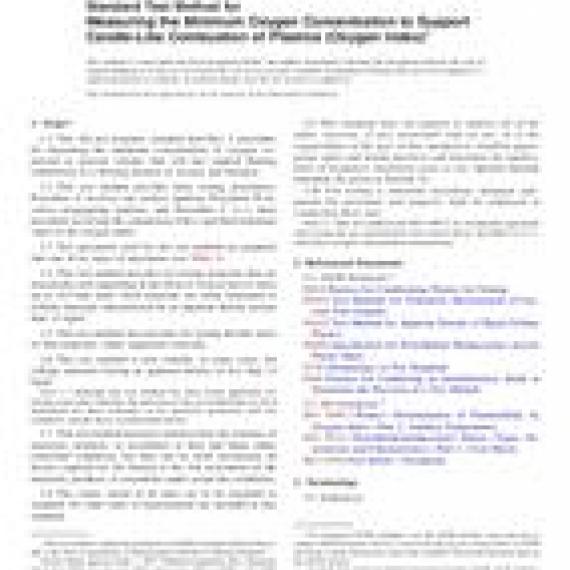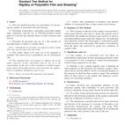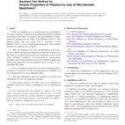No products
ASTM D2863-13
ASTM D2863-13 Standard Test Method for Measuring the Minimum Oxygen Concentration to Support Candle-Like Combustion of Plastics (Oxygen Index)
standard by ASTM International, 09/01/2013
Full Description
1.1This fire-test-response standard describes a procedure for measuring the minimum concentration of oxygen, expressed as percent volume, that will just support flaming combustion in a flowing mixture of oxygen and nitrogen.
1.2This test method provides three testing procedures. Procedure A involves top surface ignition, Procedure B involves propagating ignition, and Procedure C is a short procedure involving the comparison with a specified minimum value of the oxygen index.
1.3Test specimens used for this test method are prepared into one of six types of specimens (see Table 1).
1.4This test method provides for testing materials that are structurally self-supporting in the form of vertical bars or sheet up to 10.5-mm thick. Such materials are solid, laminated or cellular materials characterized by an apparent density greater than 15 kg/m.
1.5This test method also provides for testing flexible sheet or film materials, while supported vertically.
1.6This test method is also suitable, in some cases, for cellular materials having an apparent density of less than 15 kg/m.
Note 1-Although this test method has been found applicable for testing some other materials, the precision of the test method has not been determined for these materials, or for specimen geometries and test conditions outside those recommended herein.1.7This test method measures and describes the response of materials, products, or assemblies to heat and flame under controlled conditions, but does not by itself incorporate all factors required for fire hazard or fire risk assessment of the materials, products, or assemblies under actual fire conditions.
1.8The values stated in SI units are to be regarded as standard. No other units of measurement are included in this standard.
1.9This standard does not purport to address all of the safety concerns, if any, associated with its use. It is the responsibility of the user of this standard to establish appropriate safety and health practices and determine the applicability of regulatory limitations prior to use. Specific hazards statement are given in Section 10.
1.10Fire testing is inherently hazardous. Adequate safeguards for personnel and property shall be employed in conducting these tests.
Note 2-This test method and ISO 4589-2 are technically equivalent when using the gas measurement and control device described in 6.3.1, with direct oxygen concentration measurement.

































